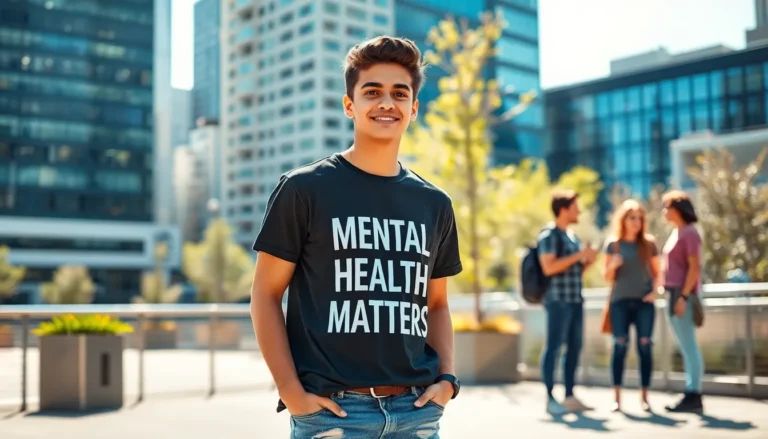Table of Contents
ToggleIn today’s fast-paced world, children face pressures that can overwhelm their young minds. Mindfulness offers a powerful tool to help kids navigate these challenges by fostering emotional resilience and mental clarity. By teaching them to focus on the present moment, children learn to manage stress, improve concentration, and enhance their overall well-being.
Engaging in mindfulness practices can transform a child’s daily routine into a journey of self-discovery. Simple techniques like deep breathing, guided imagery, and mindful play can make a significant difference in how they respond to life’s ups and downs. As parents and educators explore mindfulness for kids, they not only equip children with essential life skills but also create a nurturing environment that promotes emotional growth and happiness.
What Is Mindfulness for Kids?
Mindfulness for kids refers to techniques that help children focus on the present moment. These practices promote awareness of thoughts and feelings, enhancing emotional regulation and mental well-being.
Definition and Key Concepts
Mindfulness for kids involves paying focused attention to thoughts, feelings, and sensations without judgment. Key concepts include:
- Present Moment Awareness: Encourages children to concentrate on what’s happening right now, reducing distractions.
- Non-Judgmental Observation: Teaches kids to observe their feelings and thoughts without labeling them as good or bad.
- Breath Awareness: Promotes using breath as an anchor to ground children during overwhelming situations.
Benefits of Mindfulness Practices
- Enhanced Emotional Regulation: Children learn to manage their emotions more effectively, leading to reduced anxiety and frustration.
- Improved Focus and Concentration: Regular mindfulness exercises can enhance attention spans, making it easier for kids to engage in learning activities.
- Stress Reduction: Mindfulness techniques can alleviate stress by fostering a sense of calm and relaxation.
- Greater Empathy and Compassion: Mindfulness helps children develop a better understanding of others’ feelings, promoting kindness and cooperation.
Techniques and Activities

Incorporating mindfulness techniques can significantly enhance children’s emotional well-being. Here are some effective methods to introduce mindfulness practices to kids.
Guided Meditation for Children
Guided meditation aims to help children focus their minds and relax their bodies. Using a calm voice, an adult can lead children through a series of visualizations, encouraging them to imagine peaceful scenes, like beaches or forests. A session typically lasts 5 to 10 minutes, making it suitable for shorter attention spans. Various apps and online resources offer specific guided meditations designed for children, with themes such as gratitude, calmness, and self-love. Regular practice can improve kids’ ability to concentrate and enhance their emotional regulation over time.
Breathing Exercises for Kids
Breathing exercises help children gain control over their emotions and reduce anxiety. Techniques like “balloon breathing” involve kids imagining their bellies as balloons, inflating on the inhale and deflating on the exhale. This exercise encourages slow, deep breaths. Another popular method is “5-4-3-2-1” breathing, where children identify five things they see, four they can touch, three they can hear, two they can smell, and one they can taste. Practicing these exercises for just a few minutes each day promotes relaxation and helps kids develop a better understanding of their feelings.
Integrating Mindfulness in Daily Life
Integrating mindfulness into daily routines enhances emotional resilience and mental clarity for children. Simple strategies can cultivate awareness and presence throughout various settings, including the classroom and home.
Mindfulness in the Classroom
Integrating mindfulness in the classroom brings focused attention and emotional control to students. Teachers can implement practices like mindful breathing at the start of the day, allowing students to center themselves before learning begins. Short guided meditations during transitions between subjects provide breaks, helping to reset attention spans.
Incorporating mindful moments during lessons, such as a minute of silence to observe thoughts or emotions, encourages self-awareness. Use of mindfulness apps tailored for kids can complement these activities, offering engaging guided sessions. Promote group exercises, like mindful listening, where children focus on sounds in their environment. These practices increase engagement and create a calm atmosphere conducive to learning.
Family Mindfulness Activities
Family mindfulness activities strengthen connections and create supportive home environments. Families can practice mindful walking together, focusing on their surroundings and breathing rhythm. Designate technology-free times, where family members share stories or practice deep breathing as a group.
Engage children in mindful cooking by emphasizing the sensory elements involved, such as textures, smells, and colors. Reading together can also be a mindfulness activity, encouraging discussions about feelings tied to the story. Families can create “mindfulness moments” for daily reflections, where each member shares experiences or emotions. These activities foster communication and emotional understanding, building stronger family bonds while cultivating mindfulness.
Challenges and Solutions
Integrating mindfulness into children’s routines may present challenges. Identifying these obstacles allows for effective solutions to enhance the practice.
Overcoming Resistance
Resistance to mindfulness practices can stem from children’s initial discomfort or skepticism. Implementing gradual exposure can ease this resistance. Introducing short, engaging activities builds familiarity with mindfulness techniques, making them less intimidating. For instance, incorporating fun games that promote mindfulness can capture children’s attention and encourage participation. Positive reinforcement, such as praise or small rewards for engaging in mindfulness, can further motivate children to embrace these practices.
Addressing Common Misconceptions
Common misconceptions about mindfulness exist, including beliefs that it’s solely about relaxation or that it requires long periods of practice. Clarifying that mindfulness encompasses awareness and focus can reshape understanding. Emphasizing that even brief, simple exercises can yield benefits helps demystify the practice. Providing real-life examples can also illustrate its effectiveness. For instance, a child practicing mindful breathing for one minute during a stressful moment at school can enhance focus and calmness. By addressing misconceptions, parents and educators can foster a more accurate understanding of mindfulness and its potential benefits.
Embracing mindfulness for kids can significantly transform their emotional and mental landscape. By equipping children with tools to manage stress and enhance focus, parents and educators pave the way for healthier development. Simple techniques like deep breathing and mindful play not only promote self-awareness but also strengthen family bonds and classroom dynamics.
As children learn to navigate their emotions and cultivate empathy, they become more resilient individuals. Integrating mindfulness into daily routines can create lasting positive impacts, fostering a generation that values presence and emotional well-being. With patience and encouragement, mindfulness can become a cherished part of children’s lives, guiding them toward a balanced and fulfilling future.




